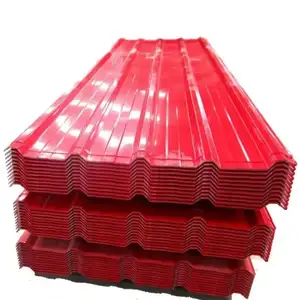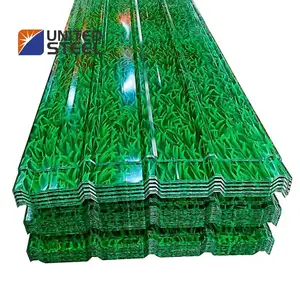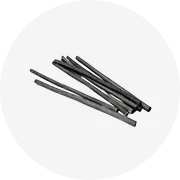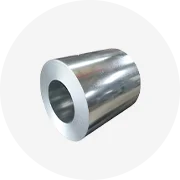Phổ biến trong ngành của bạn

Nhà Máy Giá Kinh Tế Sử Dụng Jlg860sj Bùng Nổ Thang Máy Các Bộ Phận Làm Việc Trên Không Nền Tảng Instock Cho Bán Xe Nâng
18.000,00 US$ - 20.000,00 US$
Đơn hàng tối thiểu: 1 Đơn vị


Làm Việc Trên Không Nền Tảng Cắt Kéo Nâng Lên 8M/10M/12M/14M Xô Xe Tải Làm Việc Trên Không Nền Tảng Nâng Lên Thang Nền Tảng Công Việc
Sẵn sàng vận chuyển
300,00 US$
Đơn hàng tối thiểu: 1 Bộ
Vận chuyển mỗi chiếc: 324,29 US$


Cầu Thang Điện Thủ Công 6T 8T 10T 12T Cầu Nâng Hàng Cố Định Cầu Lên Máy Nâng Xi Lanh Thủy Lực
500,00 US$ - 2.000,00 US$
Đơn hàng tối thiểu: 1 Bộ


12M mới xây dựng giàn giáo điện trang web Nâng Nền tảng di động thủy lực
280,00 US$ - 650,00 US$
Đơn hàng tối thiểu: 1 Cái


Nền Tảng Công Việc Của Xe Nâng Lồng An Toàn Gắn Trên Xe Nâng 300Kg
155,00 US$ - 275,00 US$
Đơn hàng tối thiểu: 1 Đơn vị

Nền Tảng Làm Việc Của Xe Nâng Lồng An Toàn Xe Nâng Tập Tin Đính Kèm Xe Nâng
165,00 US$ - 180,00 US$
Đơn hàng tối thiểu: 10 Cái


Xe Nâng An Toàn Cage 1000lbs Công Suất Nền Tảng Làm Việc Cửa Kép Cho Hoạt Động Ở Độ Cao Cao
50,00 US$ - 250,00 US$
Đơn hàng tối thiểu: 20 Cái

Xe nâng người đàn ông mang nền tảng an toàn lồng 300kg Tải công suất ngã ba mang người đàn ông mang nền tảng nâng điện
400,00 US$ - 600,00 US$
Đơn hàng tối thiểu: 1 Bộ

Phụ Kiện Xe Nâng, Nền Tảng Làm Việc An Toàn F Của Xe Nâng Di Động
300,00 US$
Đơn hàng tối thiểu: 1 Đơn vị

12 Mét Scissor Lift Giàn Giáo 18M 500Kg Thủy Lực Điện Nâng Di Động Cắt Kéo Ngã Ba Nâng Nền Tảng
1.400,00 US$ - 1.500,00 US$
Đơn hàng tối thiểu: 1 Đơn vị
Vận chuyển mỗi chiếc: 2.000,00 US$
Các tìm kiếm liên quan:
nền tảng làm việc xe nângnền tảng làm việc xe nâng đã qua sử dụngnền tảng làm việc bảo trì xe nângcung cấp nền tảng làm việc điệnnền tảng làm việc loại sjycần cẩu làm việc nền tảng...giá rẻ văn phòng phẩm điện nâng nền tảngnền tảng di động nâng cắt kéothang máy chạy bằng điệnnền tảng làm việc telehandlernền tảng nâng di độngnền tảng làm việc cao 8mnhôm bầu trời nền tảng nângnền tảng làm việc trên không cắt kéo động cơthang máy di động bằng nhôm

6-15 Tấn Điều Chỉnh Di Động Lên Máy Bay Tùy Biến Thủy Lực Tải Dock Đoạn Đường Nối Của Nhãn Hiệu Container Nền Tảng Tải
1.500,00 US$ - 4.000,00 US$
Đơn hàng tối thiểu: 1 Bộ

Bệ Dốc Sân Di Động Phẳng Bán Chạy Nhất Cho Xe Tải Rơ Moóc Xe Nâng Hàng Di Động Thủy Lực Bệ Nâng Tải
4.500,00 US$ - 6.000,00 US$
Đơn hàng tối thiểu: 1 Bộ

6ton-15ton Có Thể Điều Chỉnh Xe Nâng Thủy Lực Đoạn Đường Nối Cho Xe Tải Kim Loại Container Dỡ Đoạn Đường Nối Nền Tảng Giá
1.950,00 US$ - 5.700,00 US$
Đơn hàng tối thiểu: 1 Bộ

Chuyên nghiệp thép gấp làm việc nền tảng xe nâng an toàn lồng nhiệm vụ nặng nề giỏ để bán
300,00 US$
Đơn hàng tối thiểu: 500 Cái

Di Động Container Xe Nâng Tải Dock Đoạn Đường Nối Công Suất 6000Kg Tùy Chỉnh Nền Tảng
2.500,00 US$ - 8.500,00 US$
Đơn hàng tối thiểu: 1 Bộ


Bán Hot 6 ~ 12Ton Container Thủy Lực Tải Dock Nền Tảng Với Container Đoạn Đường Nối
3.000,00 US$ - 5.100,00 US$
Đơn hàng tối thiểu: 1 Bộ

Everlift toàn bộ nhà máy bán hàng ELES-15F đứng trên Stacker điện với nền tảng với CE
2.099,00 US$ - 2.299,00 US$
Đơn hàng tối thiểu: 1 Cái
Vận chuyển mỗi chiếc: 550,00 US$

Tùy chỉnh di động lên máy bay cầu container tải đoạn đường nối 6-12 tấn nền tảng di động với động cơ mới để tải và dỡ hàng
4.800,00 US$ - 5.100,00 US$
Đơn hàng tối thiểu: 1 Bộ

Cố Định Kính Thiên Văn Towable Trailer Lift/Khớp Nối Lift Bảng/Làm Việc Trên Không Nền Tảng
134,80 US$ - 469,40 US$
Đơn hàng tối thiểu: 1 Đơn vị

Di động Dock đoạn đường nối kho xe tải tải dỡ nền tảng làm việc Đường dốc container thủy lực di động
1.800,00 US$
Đơn hàng tối thiểu: 1 Bộ

10 tấn di động sân đoạn đường nối thủy lực cho xe nâng nền tảng làm việc
3.900,00 US$ - 5.000,00 US$
Đơn hàng tối thiểu: 1 Bộ

Máy Nâng Xe Nâng Điện Điều Khiển Điện Tử EPS Thương Hiệu STMA Cột Ba Chiều 5M 4.5M Với Nền Tảng Và Cánh Tay Bảo Vệ
Sẵn sàng vận chuyển
4.418,00 US$ - 4.618,00 US$
Đơn hàng tối thiểu: 1 Bộ
Vận chuyển mỗi chiếc: 117,21 US$

Qiyun Chất Lượng Cao Container Xe Nâng Đoạn Đường Nối Container Xe Tải Tải Và Dỡ Dốc 8 Tấn 10 Tấn 12 Tấn Nền Tảng Chống Trượt
3.600,00 US$
Đơn hàng tối thiểu: 1 Bộ

Cố định lên cầu tải và dỡ nền tảng, nền tảng nâng xe nâng
1.850,00 US$ - 2.050,00 US$
Đơn hàng tối thiểu: 1 Bộ

Hot bán 8-20M Gấp có khớp nối Trailer Nâng Nền tảng towable bùng nổ nâng 12M Kính thiên văn nâng trên không làm việc nền tảng
2.088,00 US$ - 3.088,00 US$
Đơn hàng tối thiểu: 1 Cái
Vận chuyển mỗi chiếc: 191.000,00 US$

Dốc 60 Tấn Sân Dốc Di Động Cho Xe Tải Và Xe Nâng Nền Tảng Bốc Xếp
58.500,00 US$ - 60.000,00 US$
Đơn hàng tối thiểu: 1 Bộ

12 Mét Scissor Lift Giàn Giáo 18M 500Kg Thủy Lực Điện Nâng Di Động Cắt Kéo Ngã Ba Nâng Nền Tảng
4.680,00 US$ - 4.728,00 US$
Đơn hàng tối thiểu: 1 Cái

Giàn giáo điện di động 500kg để trang trí nhà thang máy thủy lực bàn tay nâng nền tảng
500,00 US$ - 530,00 US$
Đơn hàng tối thiểu: 1 Bộ
Vận chuyển mỗi chiếc: 444,06 US$

Nhà Sản Xuất Của Tại Chỗ Container Phụ Trợ Bốc Dỡ Nền Tảng Điều Chỉnh Tấm Cố Định Thủy Lực Nền Tảng Cố Định Board Trục
1.400,00 US$ - 1.680,00 US$
Đơn hàng tối thiểu: 10 Trường hợp

Làm Việc Trên Không Thủy Lực Xe Nâng Người Đàn Ông Điện Nâng Nền Tảng Cho Muletto Sử Dụng
2.900,00 US$ - 3.000,00 US$
Đơn hàng tối thiểu: 1 Bộ
Vận chuyển mỗi chiếc: 500,00 US$

Tuv đánh dấu gấp RV bước Phân Xe Rửa thang công cụ mạnh mẽ Trọng lượng nhẹ nhôm làm việc nền tảng với EN131 được phê duyệt
27,36 US$ - 28,66 US$
Đơn hàng tối thiểu: 200 Cái

Trung Quốc Heli 3 tấn 3.5 xe nâng Tracker giám sát giá bộ phận mới mast chùm Bumper bảo vệ nút nền tảng an toàn
6.288,00 US$ - 6.388,00 US$
Đơn hàng tối thiểu: 1 Cái
Vận chuyển mỗi chiếc: 63.700,00 US$

Bệ Lồng An Toàn Vận Chuyển Hàng Hóa Theo Yêu Cầu Được Chào Đón Nhiều Nhất Năm 2022 Và Xe Nâng Pallet Tay
18.400,00 US$ - 22.000,00 US$
Đơn hàng tối thiểu: 1 Bộ

Bán chạy nhất mini 3m 4m 5m nền tảng nâng cắt kéo 300kg tự hành nâng cao nền tảng làm việc ổ đĩa Pin
6.000,00 US$ - 9.000,00 US$
Đơn hàng tối thiểu: 5 Cái
Vận chuyển mỗi chiếc: 125.400,00 US$

Điện Nâng Cao Xe Nâng Kinh Tế Tay Pallet Mover Jack 2 Tấn 1.5ton Nâng Lên Xe Tải 2 T 2000Kg Nền Tảng 1600Kg Công Suất Xe Đẩy
97,34 US$ - 111,47 US$
Đơn hàng tối thiểu: 1 Bộ

Baot Bán Bệ Nâng Kéo Thủy Lực Chạy Điện Chất Lượng Cao
260,00 US$ - 275,00 US$
Đơn hàng tối thiểu: 1 Cái

Pin innolift Stacker Rider Pallet Jack 6600lbs 2 tấn 3 tấn 3000kg điện Pallet Jack với nền tảng
1.260,00 US$ - 1.350,00 US$
Đơn hàng tối thiểu: 1 Cái
Các danh mục hàng đầu
Giới thiệu về nền tảng làm việc an toàn xe nâng
Hầu hết mọi người dựa vào nền tảng làm việc an toàn xe nâng, có sẵn cho hầu hết các công trình điện của họ; tuy nhiên, điều này tiềm ẩn rủi ro lớn nếu sản phẩm được làm với giá rẻ. Khi chất lượng bị tổn hại, thì sự an toàn cũng vậy. Đó là lý do tại sao tại Alibaba.com, chỉ có chất lượng cao nhất nền tảng làm việc an toàn xe nâng. được bán để đảm bảo an toàn và sự hài lòng.
Hãy tìm kiếm nền tảng làm việc an toàn xe nâng. điều đó sẽ hoàn thành công việc và tồn tại trong một thời gian dài. Sản phẩm này rất tốt cho các kỹ sư điện và chuyên gia cơ khí. Tìm kiếm qua một số tùy chọn và nhà cung cấp để không chỉ tìm được sản phẩm tốt nhất mà còn là sản phẩm bán chạy nhất để tạo ra đơn đặt hàng hoàn hảo.
Các tính năng bao gồm ít hư hỏng sắt, độ nhạy từ cao, chất lượng cao cán nguội không hạt 50H800 silicon, bề mặt mịn và độ dày đồng nhất. Những nền tảng làm việc an toàn xe nâng này. phần lớn được sử dụng trong máy biến áp, máy phát điện, động cơ gia dụng và động cơ vi mô. Bởi vì chúng rất quan trọng đối với sự an toàn và hoạt động bình thường, mua từ bất kỳ ai nhưng tốt nhất là một động thái mạo hiểm. Vì lý do này, Alibaba.com chuyên về các nhà cung cấp và người bán chuyên nghiệp, đáng tin cậy và chỉ cung cấp các sản phẩm tốt nhất.
Mua sắm nền tảng làm việc an toàn xe nâng. ngay bây giờ để tận dụng hàng hóa chất lượng cao với mức giá lý tưởng. Cho dù chúng cần thiết cho máy biến áp điện, động cơ hay máy phát điện, chúng đều hoàn thành công việc. Đừng mạo hiểm làm giảm chất lượng để tìm kiếm một mức giá thấp hơn. Thay vào đó, hãy lấy cả sự an toàn và giá cả thấp để đảm bảo an toàn cho cả người và thiết bị điện.
Hãy tìm kiếm nền tảng làm việc an toàn xe nâng. điều đó sẽ hoàn thành công việc và tồn tại trong một thời gian dài. Sản phẩm này rất tốt cho các kỹ sư điện và chuyên gia cơ khí. Tìm kiếm qua một số tùy chọn và nhà cung cấp để không chỉ tìm được sản phẩm tốt nhất mà còn là sản phẩm bán chạy nhất để tạo ra đơn đặt hàng hoàn hảo.
Các tính năng bao gồm ít hư hỏng sắt, độ nhạy từ cao, chất lượng cao cán nguội không hạt 50H800 silicon, bề mặt mịn và độ dày đồng nhất. Những nền tảng làm việc an toàn xe nâng này. phần lớn được sử dụng trong máy biến áp, máy phát điện, động cơ gia dụng và động cơ vi mô. Bởi vì chúng rất quan trọng đối với sự an toàn và hoạt động bình thường, mua từ bất kỳ ai nhưng tốt nhất là một động thái mạo hiểm. Vì lý do này, Alibaba.com chuyên về các nhà cung cấp và người bán chuyên nghiệp, đáng tin cậy và chỉ cung cấp các sản phẩm tốt nhất.
Mua sắm nền tảng làm việc an toàn xe nâng. ngay bây giờ để tận dụng hàng hóa chất lượng cao với mức giá lý tưởng. Cho dù chúng cần thiết cho máy biến áp điện, động cơ hay máy phát điện, chúng đều hoàn thành công việc. Đừng mạo hiểm làm giảm chất lượng để tìm kiếm một mức giá thấp hơn. Thay vào đó, hãy lấy cả sự an toàn và giá cả thấp để đảm bảo an toàn cho cả người và thiết bị điện.














